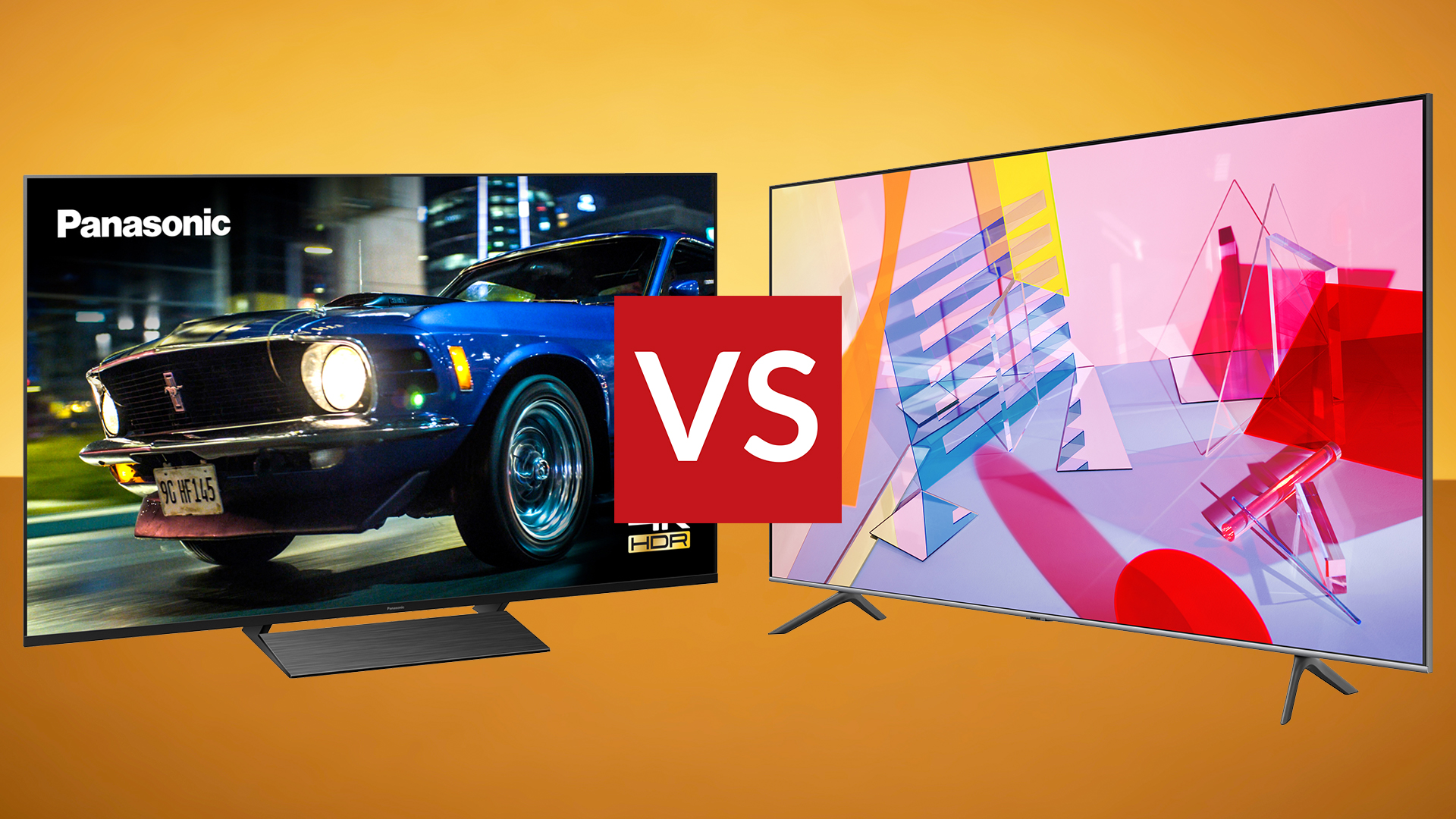

When it comes to choosing a new TV, only the very fortunate are able to simply chuck money at the question to get one of the world's very best TVs. The rest of us have to carefully weigh up the pros and cons.
Happily, both Panasonic and Samsung understand. That’s why each has a 4K HDR mid-range TV that includes many of the features and functionality of its high-end TVs without the eye-watering price tags – they both take pride of place in our list of the best TVs under £1000.
The Samsung Q60T is the cheapest QLED TV in Samsung's 2020 range, giving you the bold, wide colours that QLED is known for, plus Samsung's excellent smart TV platform, but without such advanced backlighting tech as the likes of the Samsung Q80T or Samsung Q90T.
• Read our full Samsung Q60T review
The Panasonic HX800 brings the company's famed Hollywood-level image tuning (to give you images as accurate to what the directors see when editing as possible) and support for every kind of HDR to the mid-range, giving it a real cinematic, rich sheen.
• Read our full Panasonic HX800 review
But which of these shiny new televisions is best for you? Which deserves that coveted spot in your home? Well, we’re putting them head-to-head here, explaining their differences and similarities, and helping you establish which one has more of what you want and what you need.
Sign up to the T3 newsletter for smarter living straight to your inbox
Get all the latest news, reviews, deals and buying guides on gorgeous tech, home and active products from the T3 experts
- Want to save more? Here are the best TVs under £500
- Take a step up in quality with the best OLED TVs
- Upgrade your audio with the best soundbars
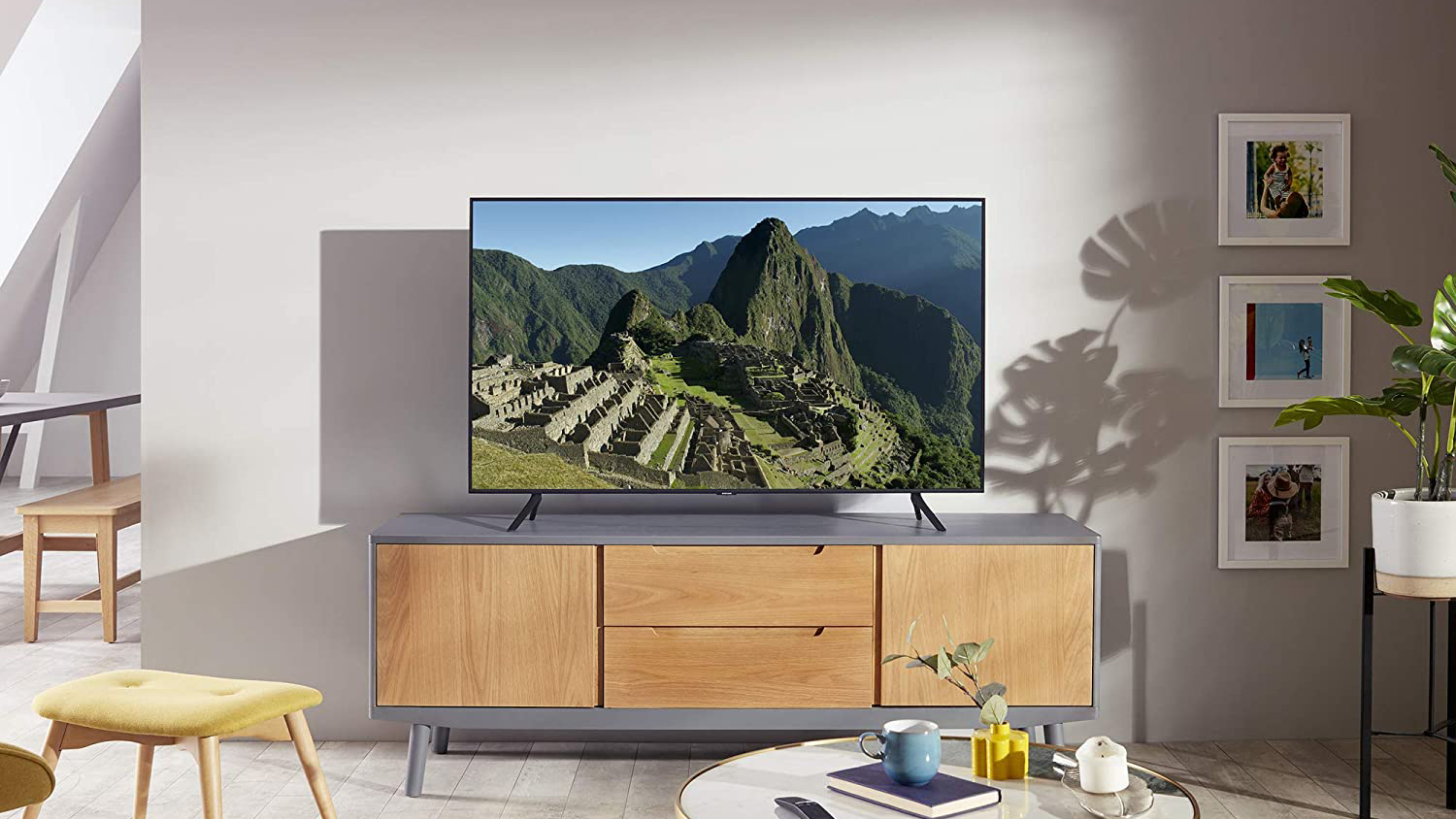
The Samsung Q60T comes in a broad range of sizes.
Samsung Q60T vs Panasonic HX800: price
As is the norm, both the Panasonic HX800 and the Samsung Q60T are available in a number of different screen-sizes.
Panasonic will sell you an HX800 in 40-inch (£649), 50-inch (£899), 58-inch (£999) or 65-inch (£1,399) sizes. If you’re after a properly compact 4K HDR TV with great image quality, then your mind may already be made up – no other manufacturer is currently building such a modestly sized yet well-specified TV (though the 43-inch version of the Sony XH95/X950H is obviously very close in size, as is the Samsung, as we'll see). The 40-inch variant looks disproportionately expensive, it’s true – but that’s economies of scale for you.
Samsung is prepared to offer you an even wider choice. The Q60T can be had in 43-inch (£599/$429), 50-inch (£699/$649), 55-inch (£899/$699), 58-inch (£999/$799), 65-inch (£1,299/$999), 75-inch (£1,999/$1,599) or 85-inch (£2,299/$2,599) sizes – so there surely must be a ideally sized screen there for you? Unless you need to go even smaller than 43 inches, of course.
As far as specification, features and functionality go, there’s no difference between any of the screen-sizes in either of these ranges. The more you spend, the bigger the television you get – but it won’t do anything its smaller, more affordable siblings don’t.
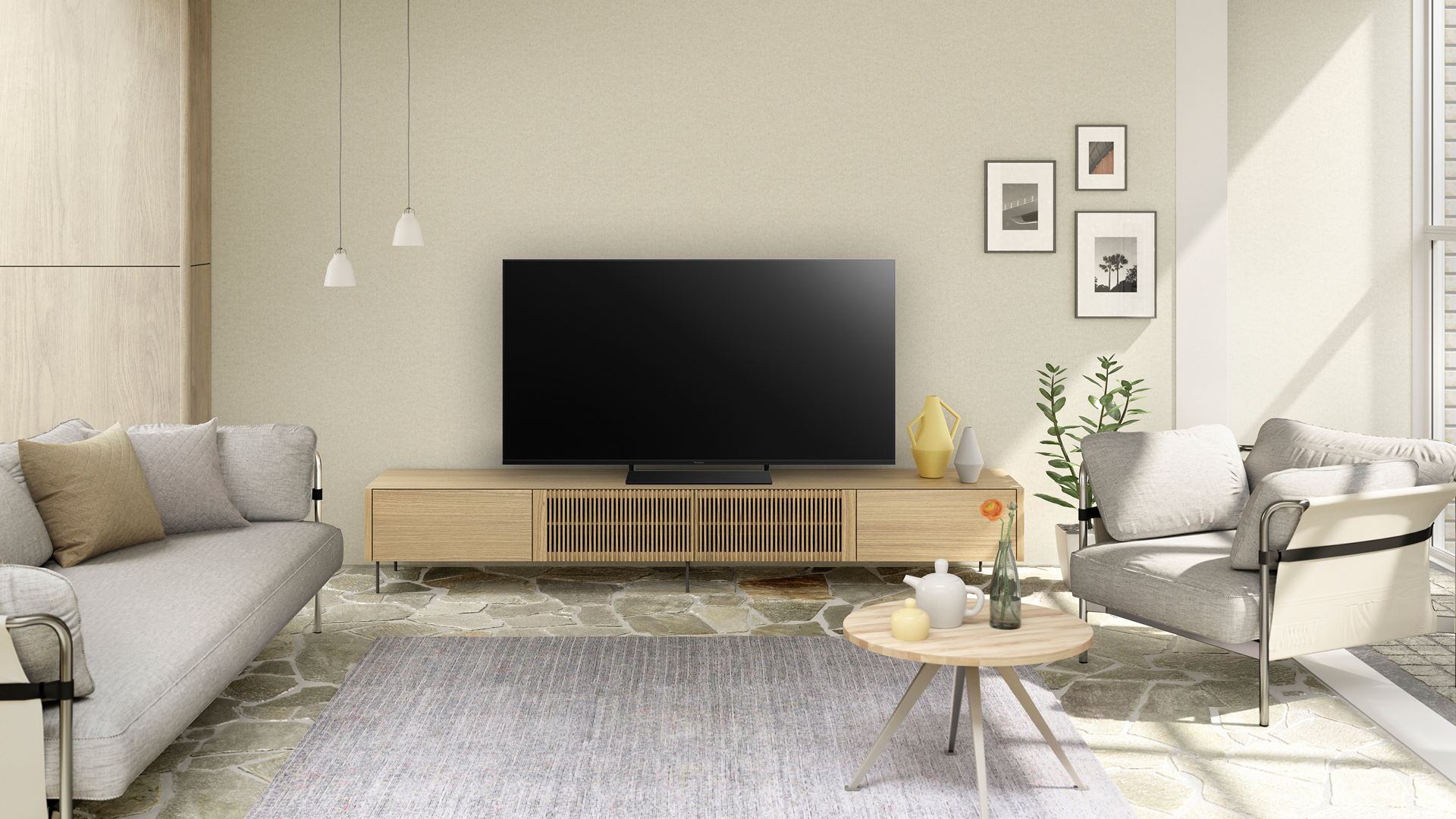
We like the Panasonic HX800's slim and minimalist design.
Samsung Q60T vs Panasonic HX800: features and connectivity
The Q60T is Samsung’s most affordable QLED range – this is a proprietary technology that uses a nano-particle quantum dot filter to improve performance of an LCD panel, but that needn’t concern us here. What’s most important to know is that Samsung 4K HDR QLED TVs are extremely well-regarded, and this is the least expensive way to get some of this technology into your home.
Samsung doesn’t support Dolby Vision HDR on any of its TVs, but every other HDR standard (HLG, HDR10 and HDR10+ dynamic metadata) is included. This is a bit of a shame, since Dolby Vision is more widely used than HDRO10+ (its direct competitor) and can help make the most of the brightness of mid-range TVs, but its loss here isn't a dealbreaker.
It has three HDMI inputs, including one that’s eARC-compatible for use with a Dolby Atmos soundbar (or any other kind of soundbar, to be fair). The HDMI sockets are at 2.1 standard, but the screen's 60Hz refresh rate means it lacks compatibility with 4K @ 120Hz that the next generation of games consoles can operate at. It’s a good gamer’s choice nevertheless, though, thanks to vanishingly low input lag. A couple of USB sockets, tuners for satellite and terrestrial TV, Bluetooth and Wi-Fi complete the connectivity story.
The HX800 sits more-or-less in the middle of Panasonic’s 2020 LCD TV ranges. Like the Samsung, it’s an edge-lit screen, but unlike the Samsung it doesn’t feature any quantum dot technology. It hits back in some style, though, by incorporating every single HDR standard (including both HDR10+ and Dolby Vision dynamic metadata).
Its three HDMI inputs are of 2.0 standard, with no plans to upgrade them in the future, but they do include Auto Low Latency Mode compatibility, which will come in handy for next-gen gamers (as will impressively low input lag – though the Panasonic’s not quite as preposterously rapid to respond as the Samsung).
Two USB sockets, a Freeview Play TV tuner, Wi-Fi and push/pull Bluetooth connectivity make the Panasonic a decently flexible device.
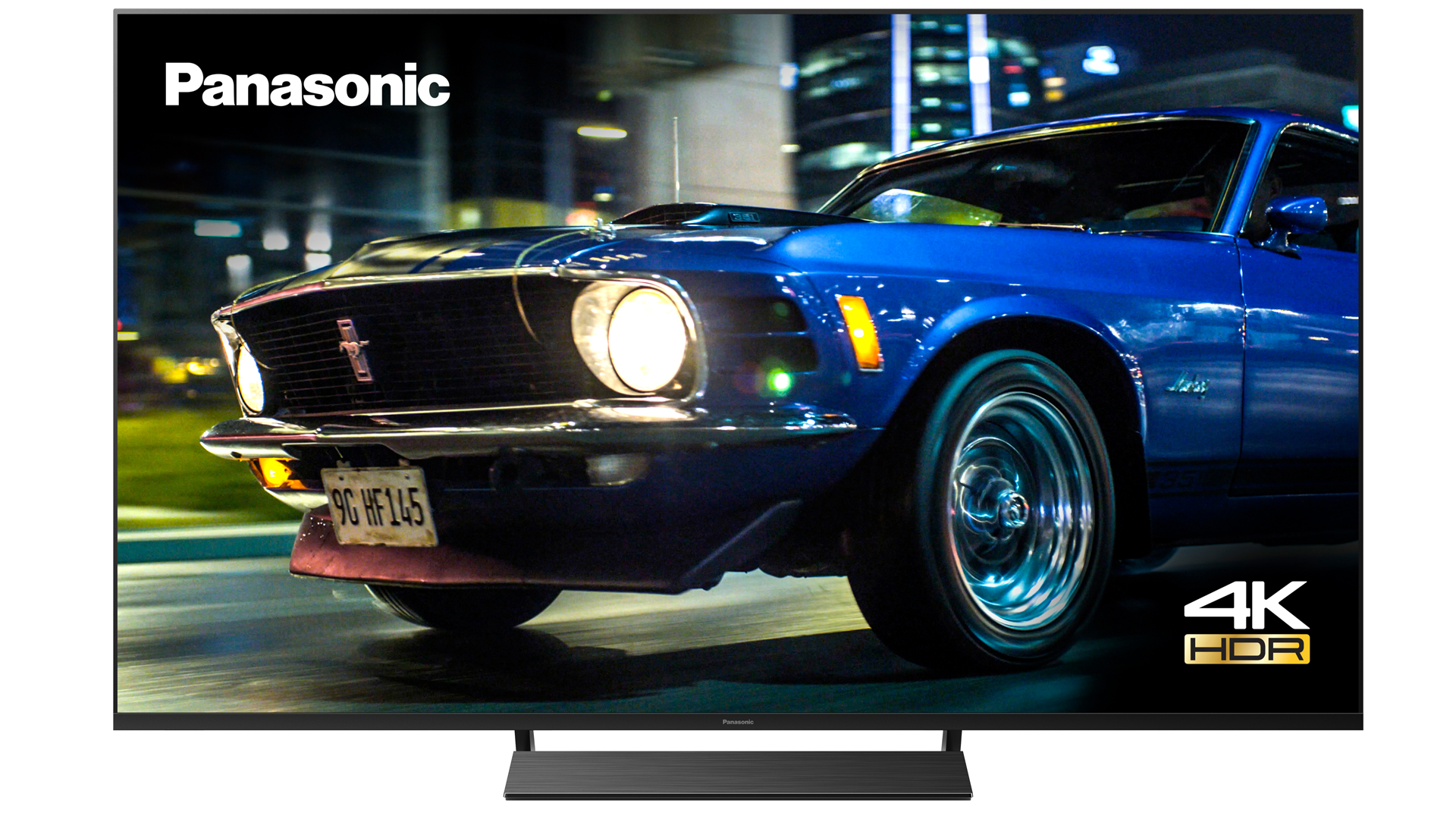
The Panasonic HX800 is maybe the most cinematic TV you can get for its price.
Samsung Q60T vs Panasonic HX800: picture quality
Both of these TVs are pretty straightforward when it comes to setting them up to deliver the kind of pictures you like – no matter if you like to spend hours tweaking picture performance controls, or if you just want to let it do its thing.
The Panasonic isn’t the out-and-out brightest TV around, but its ability to balance decently deep, detailed black tones against clean, varied whites means contrasts are striking nevertheless.
The HX800 is working with quite a lush colour palette and, given some top-of-the-shop 4K HDR material to work with, it’s capable of properly cinematic and thoroughly absorbing pictures. Despite the edge-lit configuration, the Panasonic’s backlighting is uniform, and as long as you’re prepared to invest at least a little time investigating its Intelligent Frame Creation options then nice, smooth motion can be achieved. Picture noise is generally well controlled, edges are drawn convincingly, and detail levels in skin-tones are very acceptable too.
Like the HX800, Samsung’s Q60T is an edge-lit panel and, like the HX800, the Q60T has no problem loading black tones with detail even when they’re very black indeed. It’s capable of strong, intense contrasts too, thanks to bright, detailed white tones and slightly higher overall brightness – though watching some 21:9 content reveals some mild backlight clouding in the corners of the black bars above and below the images.
Colours are convincing too: the QLED panel means this screen has around 92% colour gamut coverage, which is impressive. It does good work with motion, too, and has a real facility for revealing the finest details of tone and texture. Only the most intricate, complicated patterns can ruffle its feathers.
Both screens demonstrate real talent when it comes to upscaling sub-4K content to fill their massive pixel-counts. The Panasonic probably has the edge when it comes to eliminating picture noise and keeping detail levels high, while the Samsung shades it where motion is concerned.
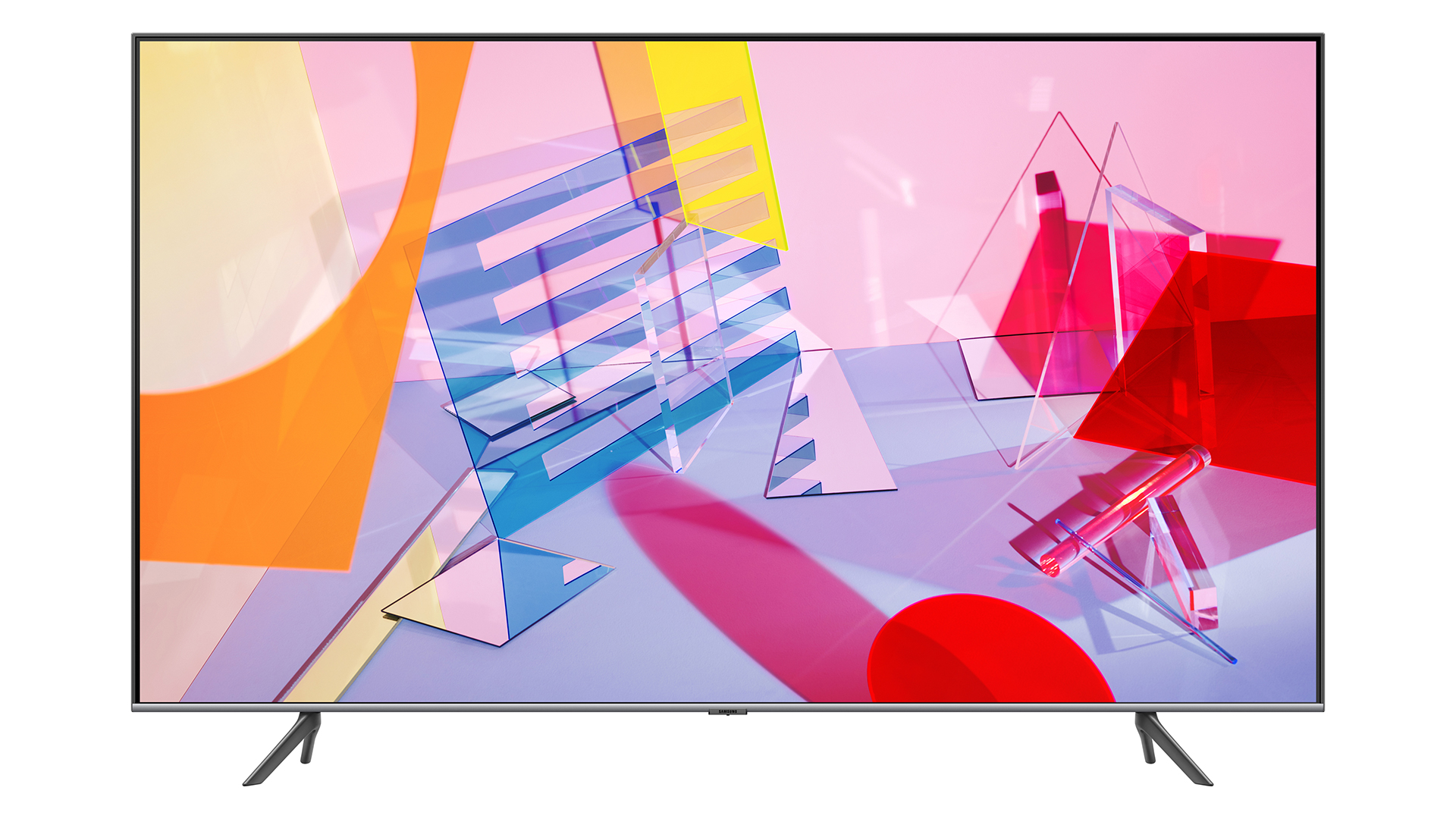
The Samsung Q60T has wide and fairly tall stands, perfect for the soundbar you'll probably want.
Samsung Q60T vs Panasonic HX800: sound quality
Where audio quality is concerned, the Samsung’s something of a throwback. Like flatscreens of old, it sounds weak, and manages to be both vague and hard at the same time too. 20 watts of power can sometimes be turned into something reasonably bold, but not here. If you want to bring your sound into line with the quality of the Q60T’s images, consider a soundbar. Consider it strongly.
The Panasonic has the same amount of power as the Samsung, and is arranged in stereo too. But it manages to put a little verve into its sonic presentation, and doesn’t suffer from the unyielding treble stridency of the Q60T. The HX800, in fact, is quite inoffensive – which is generally about as much as you can hope for.
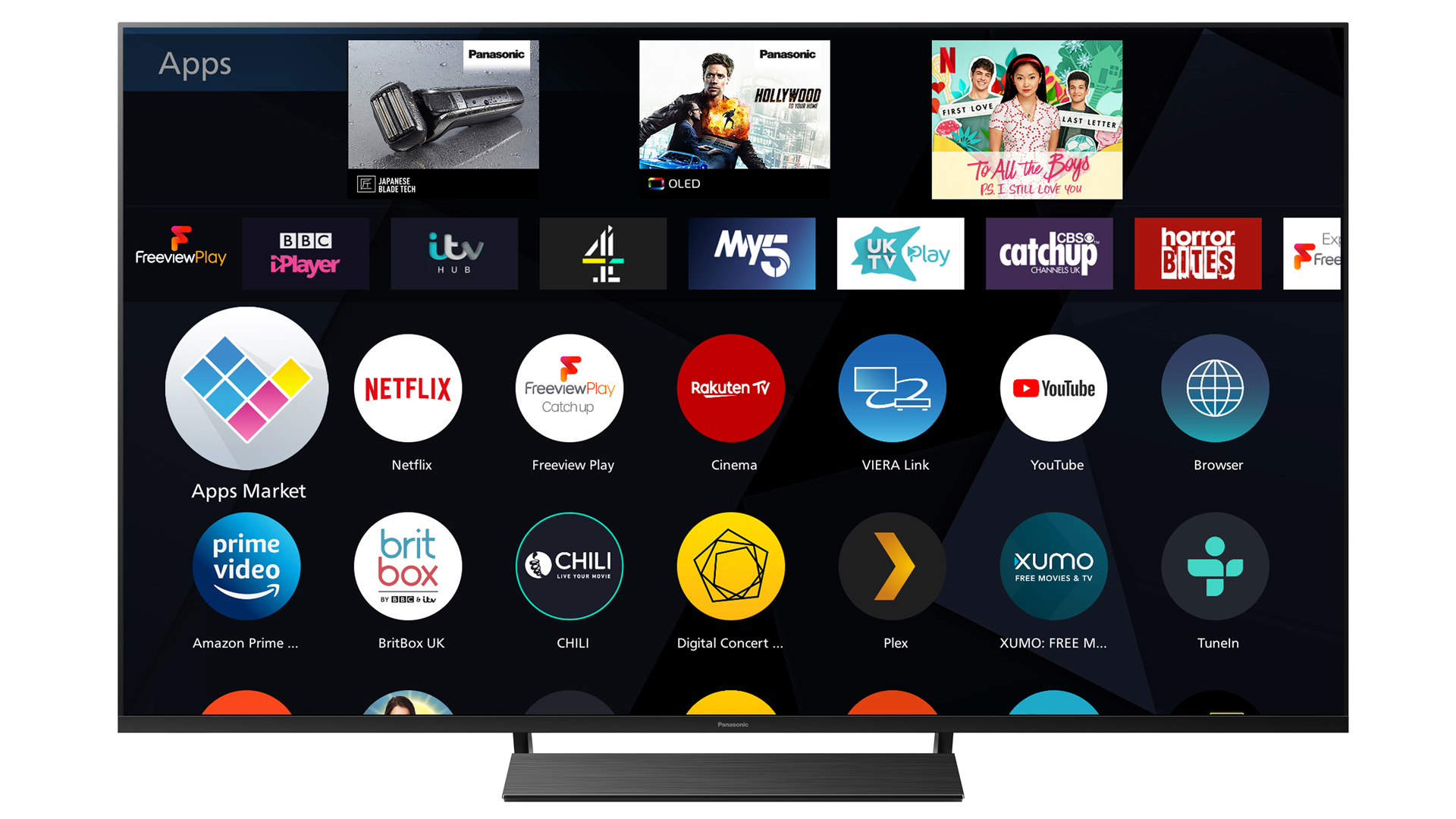
The Panasonic HX800 has almost every streaming app you'll need.
Samsung Q60T vs Panasonic HX800: interface
Panasonic’s proprietary My Home Screen 5.0 user interface is solid, logical and doesn’t get all up in your face. It’s easy to customise and includes the majority of worthwhile catch-up and streaming services (though there’s no Disney+, which lately looks like quite an oversight – you can add it with one of the best media streamers, though). Navigation is via what’s fundamentally the same remote control handset Panasonic perfected years ago, or if you’ve got one of the best smart speakers on the same network the HX800 will also work with Alexa or Google Assistant.
Samsung’s Tizen-based operating system is widely regarded as among the very best around, and it makes using the Q60T much more a pleasure than a chore. It’s clean, intuitive, doesn’t hog the screen and can be finessed to suit your specific requirements. Navigate around it using either of the two remote controls (one elegant wand with not enough buttons, one bog-standard clicker with too many), or use Alexa or Google Assistant via a networked smart speaker.

Samsung Q60T vs Panasonic HX800: verdict
Given how very evenly matched these two ranges are (at least as far as picture quality, build and broad specification are concerned), you’re entitled to put practicalities uppermost in your mind.
The Samsung Q60T is usefully cheaper below the 58-inch screen size – unless you absolutely, positively have to have a sub-43-inch screen, it’s the better bet unless you’re desperate for Dolby Vision HDR. Certainly the nominal £200 difference between respective prices at 50 inches makes the Samsung the obvious choice. And if you want something bigger than 65 inches (you lucky thing) then it’s a one-horse race.
But where the ranges properly overlap, at 58 inches and 65 inches, you’ll need to take a more nuanced view. The Samsung’s brighter and has a better operating system. The Panasonic controls its backlighting more efficiently, features all HDR standards and doesn’t sound like you’ve suddenly developed tinnitus.
Both are capable of lush, cinematic images, and the better the standard of content you give them the better they look. We’d probably take the Panasonic if these were the sizes we were interested in – but if you went for the Samsung, we wouldn't blame you one bit.
- The best 32-inch TVs – perfect for bedrooms and offices
- The best 43-inch TVs – great entry-level 4K sets
- The best 48- to 50-inch TVs – beautiful mid-size 4K TV sets
- The best 55-inch TVs – premium TVs that still fit most living rooms
- The best 65-inch TVs – beautiful big-screen TVs
- The best 75-inch TVs – giant 4K and 8K TVs packed with features
Simon Lucas is a freelance technology journalist and consultant, with particular emphasis on the audio/video aspects of home entertainment. Before embracing the carefree life of the freelancer, he was editor of What Hi-Fi? magazine and website – since then, he's written for titles such as Wired, Metro, the Guardian and Stuff, among many others. Should he find himself with a spare moment, Simon likes nothing more than publishing and then quickly deleting tweets about the state of the nation (in general), the state of Aston Villa (in particular) and the state of his partner's cat.
-
 This is the sound of BMW's upcoming Neue Klasse EVs
This is the sound of BMW's upcoming Neue Klasse EVsHas BMW cracked the problem of making EVs sound fun with its next-gen soundscape for its Neue Klasse cars
By Alistair Charlton Published
-
 Build unshakeable core strength with a kettlebell and these three exercises
Build unshakeable core strength with a kettlebell and these three exercisesAdd this to the end of your workout to fire up your midsection muscles
By Bryony Firth-Bernard Published